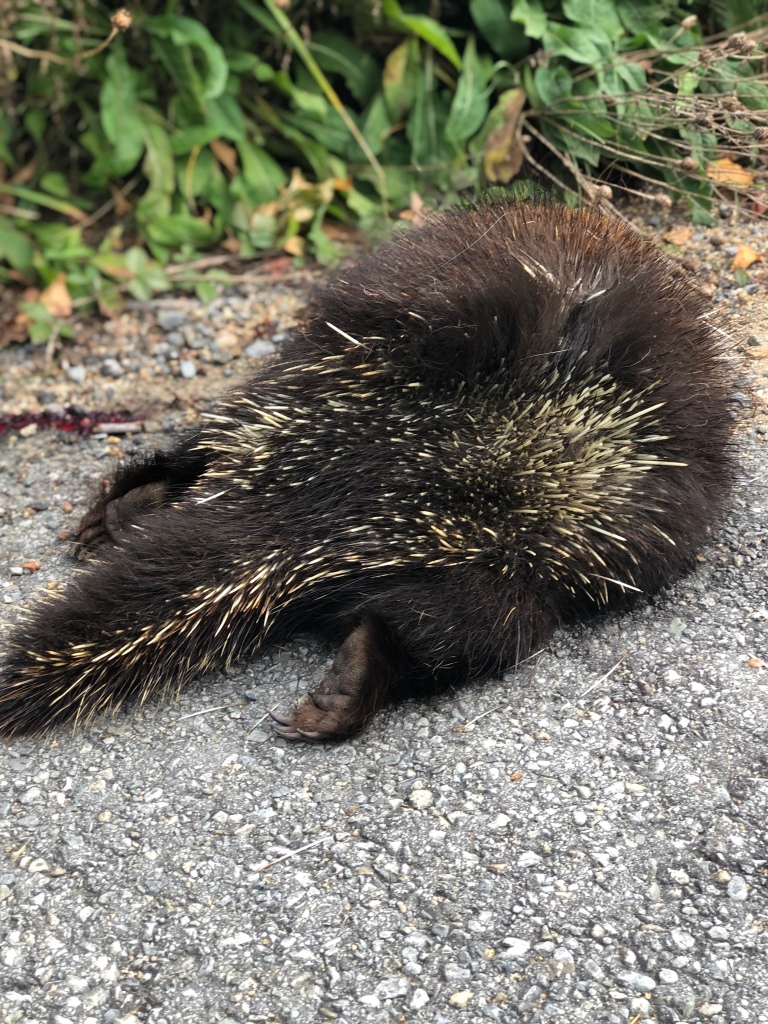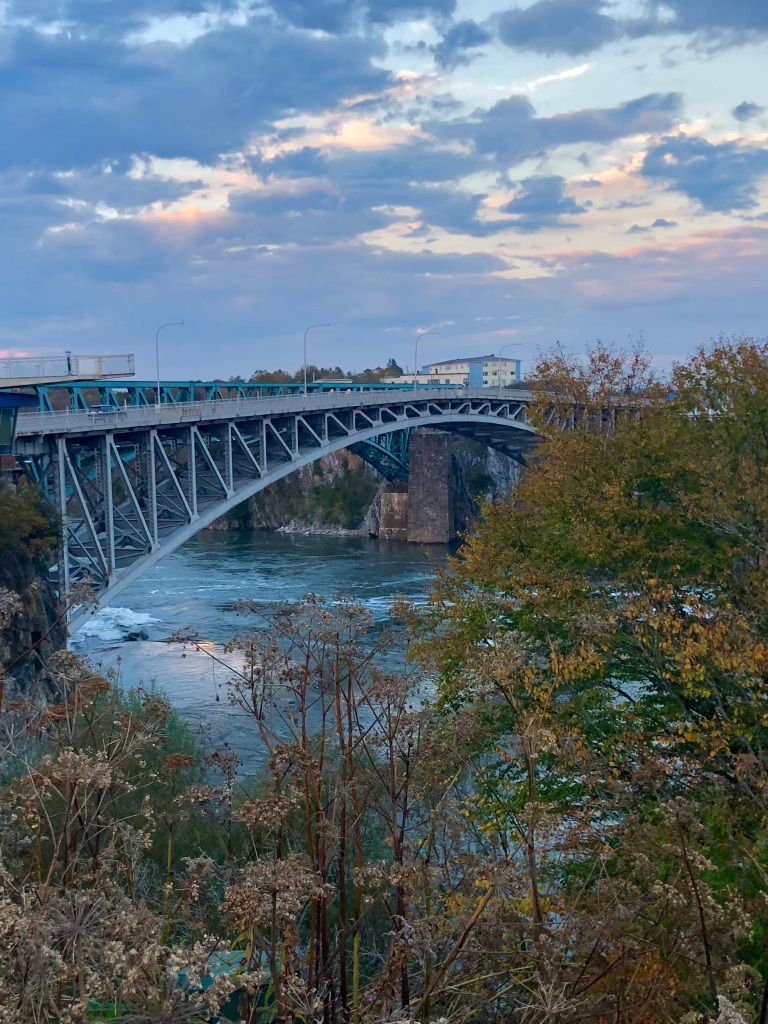
We should probably talk a bit about porcupines. Having traveled a fair amount across North America, I’ve certainly seen porcupines before, though more often just the evidence of them in damaged trees. Apparently, they are fond of Nova Scotia.
New World Porcupines are rodents, the largest save the beaver, in North America. They are herbivores and tend to be nocturnal, though not exclusively so. Early on in our travels in Nova Scotia, they accounted for the largest amount of road kill — other than a skunk or two, every single animal dead on the road we saw was a porcupine. In terms of numbers, we saw maybe two dozen over the first week. At some point today, it got a bit silly. We passed probably 10 in the first few hours of the morning — then, along a narrow track we had taken out the coastline, we saw a live one puttering along the edge of the road doing what I don’t know. We stopped and he or she thumped into the bar ditch and, other than the rustle of foliage, was invisible to us. After a bit of harassment, we managed to catch sight of the critter as it climbed up the hill and away, safely. 200 hundred yards further and we found the not so lucky peer. Freshly confronted with some sort of moving vehicle, the porcupine was dead. It was an opportunity to study, up close, what I can best describe as a small beaver, without the fat tail, clad with loose, singular spines, and sporting feet exactly like a bear. This is an odd animal. It is not successful in motorized environments, but it clearly favors the rolling, wooded hills of southern Nova Scotia. It is not something I imagined I would see and examine on this trip.

Spiny rodents notwithstanding, southern and eastern Nova Scotia continued the theme of raw coastal beauty and wide ranging wooded interior that, at present, is showing the full spectrum of fall colors. The trees remain generally stunted, managing 20-30 feet before the winds snap the leader and the tree twists and diverts energy elsewhere. The rivers are clear and fast flowing, but something in the soil or rock makes them look rust colored. Unlike the rivers in the northern US, where tannins color the actual water to make them rusty at some times of the year, here the water is uncolored and its the bed of the river causing the illusion. We see little evidence of fish, though the rivers are named things like Salmon and Trout, and there clearly are good times to find fresh water fish here — we simply don’t.

Climbing back up to the north west, we arrive at Digby, where we catch the ferry across the Bay of Fundy to New Brunswick. The bay is flat calm and the two hour transit is marked by bright sunshine, Minke whales, porpoise, and the odd shore bird. As I stood on the stern of the boat and watched Nova Scotia fade into the horizon, I realized one of the reasons I could never sort out where I was directionally while traveling there, is that the entire landmass is canted — like it runs from 8 o’clock to 2 o’clock on the watch face. So left, right, up, down don’t correspond to the West East North South on the compass. The ocean here, for instance, isn’t always east or west, sometimes its north, sometimes south. I brought my sense of direction from my place to this place. And it didn’t work. There are porcupines in the roadways here. It is a different place, that I need to meet as it is and learn from.
On the ferry, I met a woman from Marietta, Georgia, who had been touring around Nova Scotia for two weeks. She didn’t like it. There was, in her view, nothing to do here. There weren’t enough gas stations. The restaurants closed too early. You couldn’t see in the mornings when the fog was low. I told her, “you’re looking for home in Nova Scotia, I don’t think you were ever going to find that.” But of course, I was guilty as well — I wanted the landscape to make sense on my compass, but my compass is built in an entirely different place.
And that is why traveling like this helps me. Eventually, amidst all the other observations, I come to one that, with the help of dead porcupine and bitter traveller and frustrated navigator, actually makes me better. I made a reach, and the journey isn’t over, but this segment of it has been as fulfilling as any. Tomorrow, we cross back into the US and wander a bit through New England before a final push for home. I will be different when I get there, and better for having been here.

